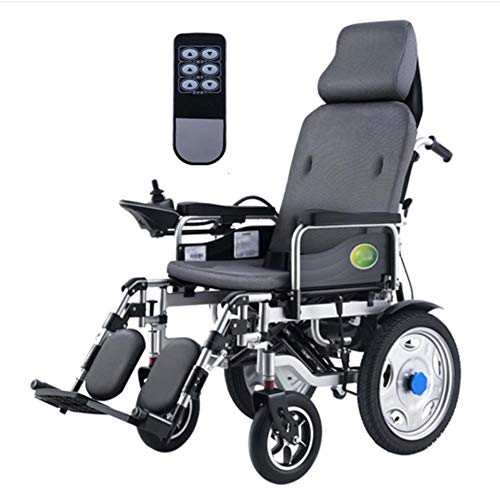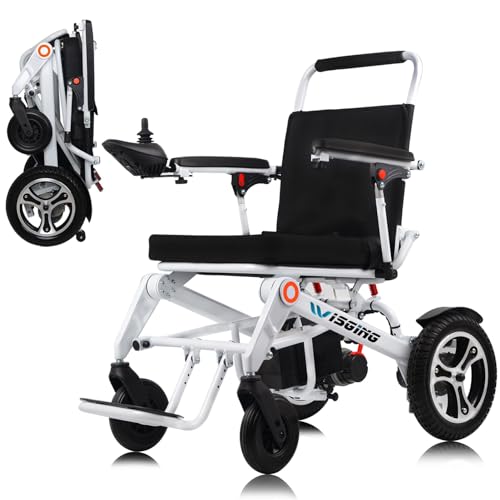5 Laws That Anyone Working In Electric Wheelchair With Joystick Should…
페이지 정보

본문
 electric wheelchair wheels Wheelchair With Joystick
electric wheelchair wheels Wheelchair With Joystick Joysticks in power wheelchairs can significantly improve the user's independence and make it easier to use. Standardized joysticks may not accommodate the unique characteristics of hand impairment.
Joysticks in power wheelchairs can significantly improve the user's independence and make it easier to use. Standardized joysticks may not accommodate the unique characteristics of hand impairment.This study evaluated the efficacy and satisfaction of customizing power wheelchair joysticks fabricated with 3D printing technology. Evaluation was conducted using the modified power-mobility inside driving assessment (PIDA), National Aeronautics and Space Administration Task Load Index, and the Psychosocial Impact of Assistive Devices Scale.
Control
The control system of the power chair comprises two important components: the joystick and the electronics. Joysticks that are standard mount to the left or right sides of the chair, whereas more sophisticated rehab chairs might include swing-away mounts that allow the joystick to be moved into the middle of the seat.
The way that a joystick is placed and operated will play an important role in determining whether it can be a success for a specific client. For instance in the case of someone who has significant tremors, it is crucial to ensure the joystick is designed in such a way that the movements do not trigger accidental activations of the chair. Standard EPW joysticks are proportional input devices that react to the deflection amount of the gimbal to control the chair's movement (similar to an electronic game controller or a car accelerator pedal).
However, there are now numerous alternative control options for power wheelchairs that require minimal force to activate. Switch controls, sip-and-puff controls head arrays, sip-and-puff controls, and chin controls are all available. Certain of these controls require an additional interface to connect to the wheelchair. However, many of them work with new joysticks which incorporate Bluetooth into the handles.
Some wheelchair joysticks come with a screen to display the current status of the system and provide feedback to the user, which can be particularly useful for people with visual or cognitive impairments. Other advanced joysticks have the capability of controlling many different devices like environmental controls and even a TV or tablet.
Regardless of the technology, a joystick is only as useful as it is comfortable for the user to operate. This is why it is important to consider the size and position of the joystick's buttons to ensure they are easily accessible. Additionally, it is important to think about the sensitivities of the joystick, which can be adjusted to a variety of levels depending on the requirements of each user.
Comfort
A joystick-controlled power chair provides many advantages that aren't available with manual chairs. They minimize fatigue triggered by operational factors and allow for longer travel times than manual-operated counterparts. They can also be used in places with fewer spaces and more difficult terrain than a manual one, for example, uneven surfaces or slopes in the outdoors. With this added independence users will experience the freedom of movement that breathes new life into their lives and reminds users of the feeling to be able to move around independently.
There are a variety of power wheelchairs available, each with their distinct characteristics. The number of bells and whistles included on a specific model will depend on the needs of the user and desires. Some of the most commonly used features include:
Controls on an electric motor wheel chair wheelchair equipped with a joysticks can be adapted to meet your individual requirements. This includes the design and location of the knob, ball or handle. Joysticks are usually located on the armrest of the driver's seat, while others are placed on the rear or front of the seat to make it easier for the an attendant to reach. They can also be placed on the sides of the seat for those with limited shoulder range or muscles that are weak.
Other features can be more customized like the design and size of the joystick's display. Some models are backlit or have the color of a display that is easier to read for those who have low vision. Some models also have additional modes that provide visual or audio cues to aid in navigation. Other models may include odometers, clocks and battery charge indicators.
The ability of a joystick to maneuver within a narrow turning radius is also crucial. The best models will have a narrow turning radius, which makes it easier to maneuver around obstacles and narrow spaces such as hallways. This tight turning radius makes it easier to navigate in public places and in stores. This tight turning circle is particularly beneficial for those with mobility issues, such as cerebral palsy or other issues with mobility such as multiple sclerosis ALS and Huntington's Disease, spinal cord injury or brainstem stroke.
Safety
Power wheelchairs are designed with safety in mind. They are equipped with reliable brake systems that can reduce the speed quickly when the consumer presses the joystick control. They also have anti-tip wheels at the rear that help prevent the chair from tipping backward.
The most common type of joystick is a proportional controller, which is similar to car accelerator pedals and video game controllers in that the more the joystick moves away from the center the more quickly the wheelchair moves. These kinds of joysticks require proprioception as well as finger dexterity to work efficiently. A standard joystick is mounted on the armrest, but a variety of different specific controls are available that place the control in the middle or at the sides of the seat.
Some consumers may not have the strength to deflect a joystick handle even with the help of special rigging. Certain people who suffer from spasticity could have issues because their muscles can become stiff or weak. In these cases it is possible to use a head control device that transforms the movement of the user's head into a command for the wheelchair might be a better option.
Another factor to consider is the size and placement of the joystick's buttons. If the buttons are too far forward or hard to reach, they may affect the seating position of the user, and cause an injury to the hands. If the joystick is too far back, it can be difficult to move the chair or turn the wheels.
The seatbelt should be fastened on an electric wheelchair. The most powerful wheelchairs can travel at speeds of up to 8 miles per hour, and an unfastened seatbelt could result in grave injuries or even death. It is also crucial to charge batteries regularly, at least every night, if it is possible. This will ensure that they live longer and maintain their effectiveness. It's also recommended to perform regular maintenance for your chair to ensure the components are in good working order.
Accessories
The joystick is an essential component of any power wheelchair, and there are many accessories that can be added to enhance its performance. These can range from simple switches up to more complex interfaces that connect to communication devices and even external environment control units. Power wheelchairs with higher end features will typically come with a variety controller components that are able to meet the needs of different clients. For example the non-expandable controller would typically accept the proportional joystick as an input device, whereas an expandable controller can allow for puff and sip controls, specialty switches, and head array systems. Some of the advanced controllers are capable of operating up to two lightweight power chairs seating actuators, which can adjust the angle and position of the seat.
The most basic kind of joystick that is commonly used in the clinic is a proportional control, sometimes referred to as a movement sensing joystick. This kind of joystick, like accelerator pedals for cars and video game controllers, responds to the force applied on the stick by increasing its output (i.e. The speed of the wheelchair lightweight electric increases when the stick is moved away from the center. This requires a lot of dexterity as well as a strong proprioception to be able to use it effectively.
While the technology that is in use today can be used to compensate for small variations in amplitude in EPW driving but it is not able to recognize and adjust to many more severe accidental movements, such as those caused by greater involuntary or amplitude tremors that are not associated with conscious intent like athetosis.5 Until we can develop and implement new technologies that can accurately detect and adjust to these types of unintentional movements, a lot of sufferers with diseases such as athetosis, MS, ALS or spinal cord injuries won't be able to safely operate an electric Power Chairs For Sale, Www-Mymobilityscooters-Uk17458.Mycoolwiki.Com, handicap chair electric.
Most wheelchairs can be customised and programmed by a medical professional. These parameters include altering the torque provided by the motor and adjusting the speed of the chair. They can also be used to determine the dead zone which is the area at which the EPW won't generate an output. Some controllers permit the clinician to store backup programs. This is useful in an emergency or when the symptoms of a patient change.
- 이전글무료웹툰 ★퍼플툰★ 무료웹툰 사이트 리스트 2025년 TOP10 24.11.24
- 다음글안성재 셰프 "가끔 먹을 것 같다" 솔직한 광고에 홀린 88만명 24.11.24
댓글목록
등록된 댓글이 없습니다.














